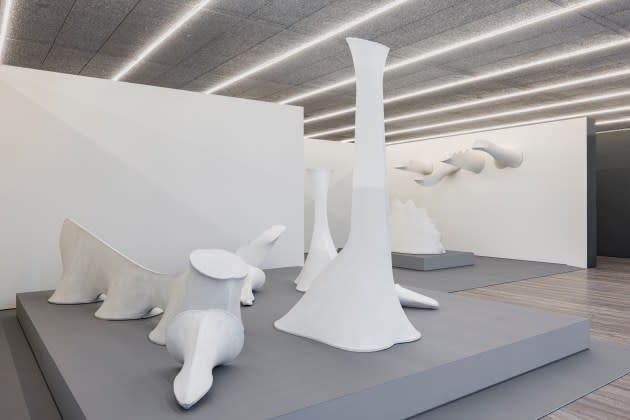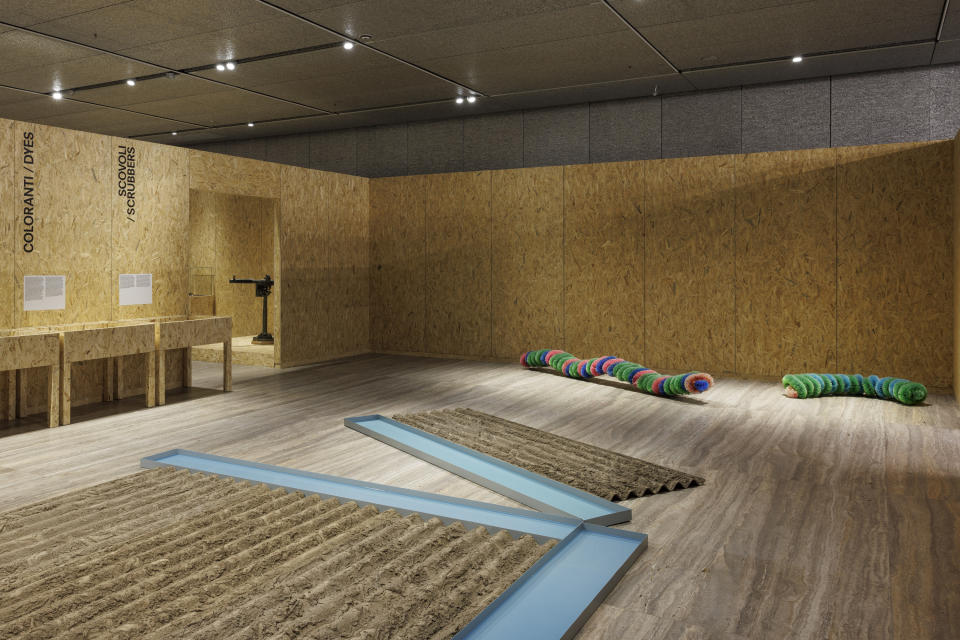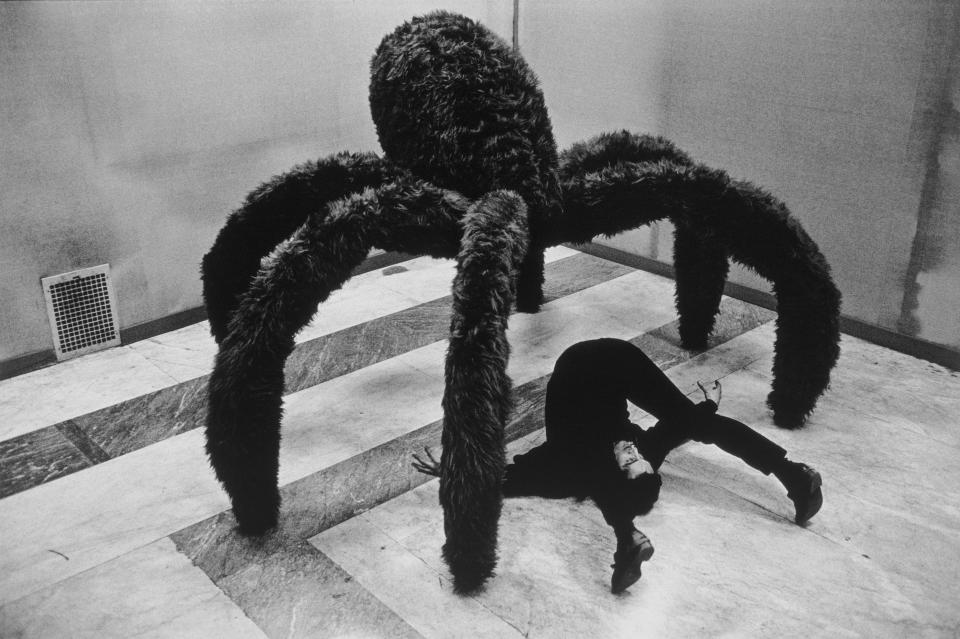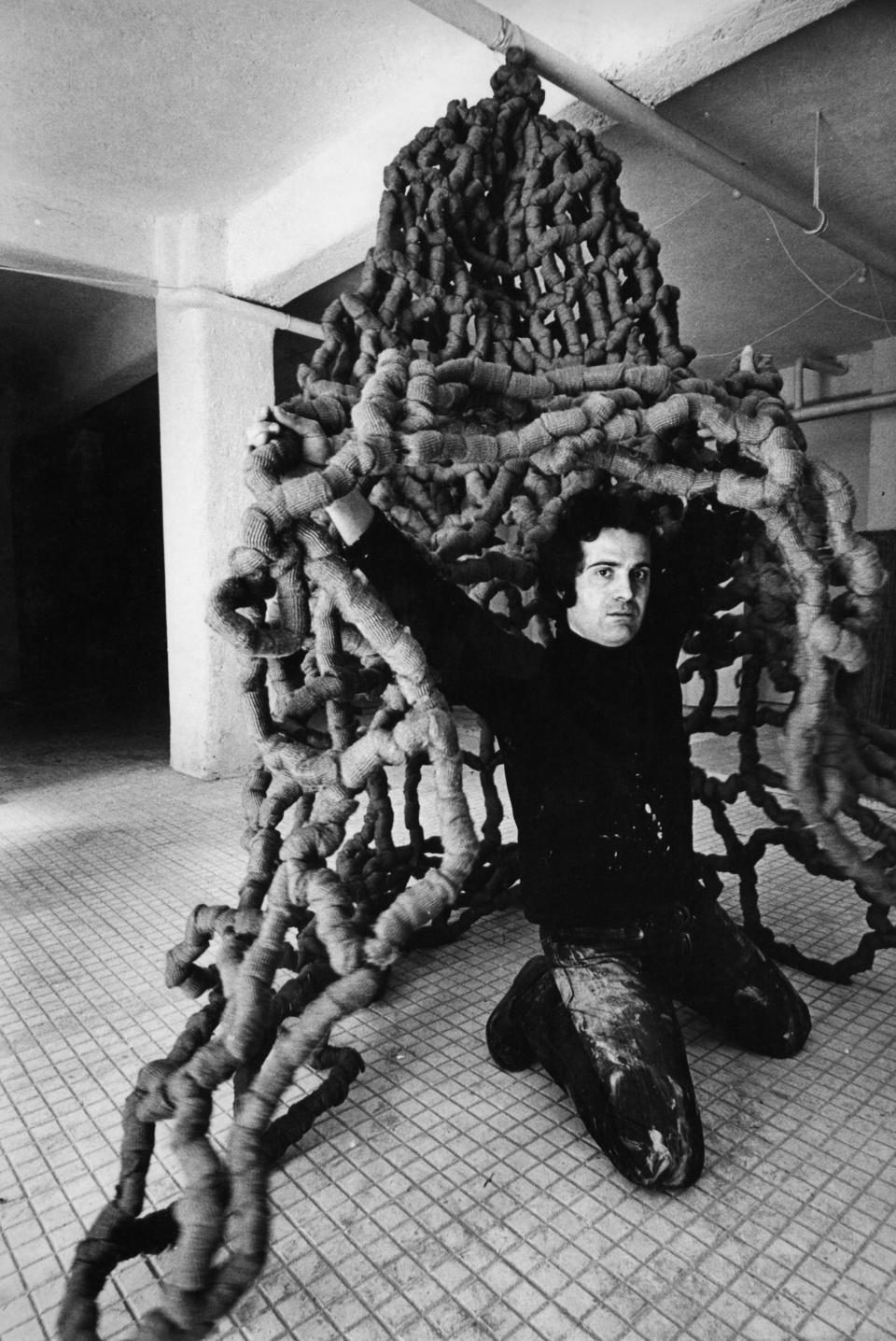Fondazione Prada Unveils Italian Artist Pino Pascali Retrospective
- Oops!Something went wrong.Please try again later.

MILAN — The cultural offer of Fondazione Prada spans from art and dance performances and musical events to installations from a range of contemporary artists. Its latest exhibition pays tribute to Italian artist Pino Pascali, and runs until Sept. 23 at the Milan venue.
A motorcycle accident cut short Pascali’s life at age 32, but he significantly contributed to the development of the Italian and international post-war art scene, impacting several generations of artists and critics.
More from WWD
EXCLUSIVE: CEO Talks: Gianfranco D'Attis on the 'Pradaness' Potential, Retail Growth
Court's Decision to Ban 'MetaBirkins' From Museum Show Is Challenged by Artist
Hugs and Accolades for Joseph Abboud at Medal of Honor Event
The set design of the Milan exhibit includes 49 works by the artist from Italian and international museums and private collections, as well as select photographs portraying him with his works. The retrospective, curated by Mark Godfrey, is divided into four sections, each presenting a different perspective on Pascali’s work. It unfolds through three buildings of the foundation: the Podium, the North and the South galleries.
“Pascali explored the relationship of sculpture and stage props, and contrasted sculpture with functional objects. Works that looked from a distance like readymades revealed themselves close-up to be constructed from found materials,” Godfrey writes in the catalog. “He thought about what a ‘fake’ or ‘feigned’ sculpture could be. He titled pieces as if they were solid masses, winking to his audiences who knew they were empty volumes.”
The ground and first floors of the Podium host the first section: five solo exhibits created by the artist as imaginative environments rather than just a selection of works from his studio. On display are replicas of his work at “Sperone gallery,” (1966) in Turin represented with the “Armi” series and steel wool sculptures such as “Trappola,” and works from the Venice Art Biennale monographic presentation staged in 1968, which include works such as “Cesto,” “Contropelo” and “Solitario.”

The second area is dedicated to the natural and industrial materials employed by Pascali such as canvas, dye, car components, asbestos fiber cement and fake fur. Visitors can learn where he sourced them, how they were used in commerce, which other artists were also using them, and what has happened to them over time. Key works include “Campi arati e canali di irrigazione” (1967), which resembles a freshly plowed piece of land, alongside magazines and catalogs from the ’60s, and videos to understand the qualities, contexts and conservation issues of the materials Pascali experimented with in his career.

According to Godfrey, Pascali’s career encapsulates what it means to be an exhibitionist “creating captivating but temporary environments made up of the artist’s own works, environments that were more than the sum of their parts.”
Godfrey and artist Peter Fischli will hold a conversation on April 14 at Fondazione Prada’s Cinema Godard. The documentary “Pino” (2020) by Walter Fasano, dedicated to the life and career of Pascali, will be screened afterward.
An illustrated book, designed by Joseph Logan and published by Fondazione Prada, accompanies the exhibition and includes an introduction by Miuccia Prada, president and director of Fondazione Prada, an essay by Godfrey, texts by international writers, art historians and curators, as well as reprinted interviews and essays by art critics.
Born in Bari, Italy, in 1935, Pascali moved to Rome in 1955 to study scene painting and set design at the Accademia di Belle Arti di Roma. He worked as an assistant scenic designer in many television productions of the Italian broadcaster Rai. He also collaborated as a set and graphic designer with cinema and advertising companies. In 1965, Galleria La Tartaruga in Rome hosted his first solo show, followed in 1968 by one at the Venice Art Biennale.

Best of WWD

